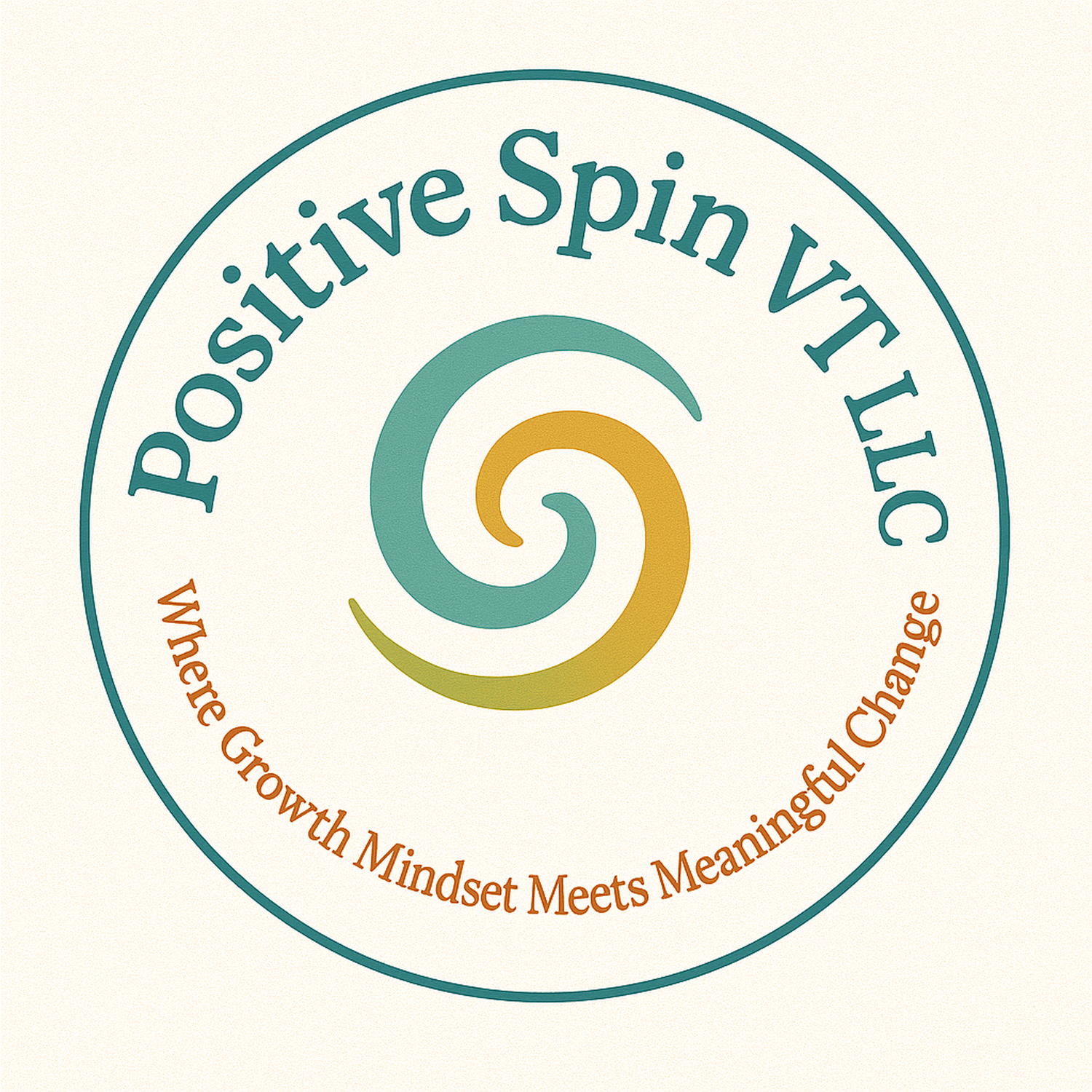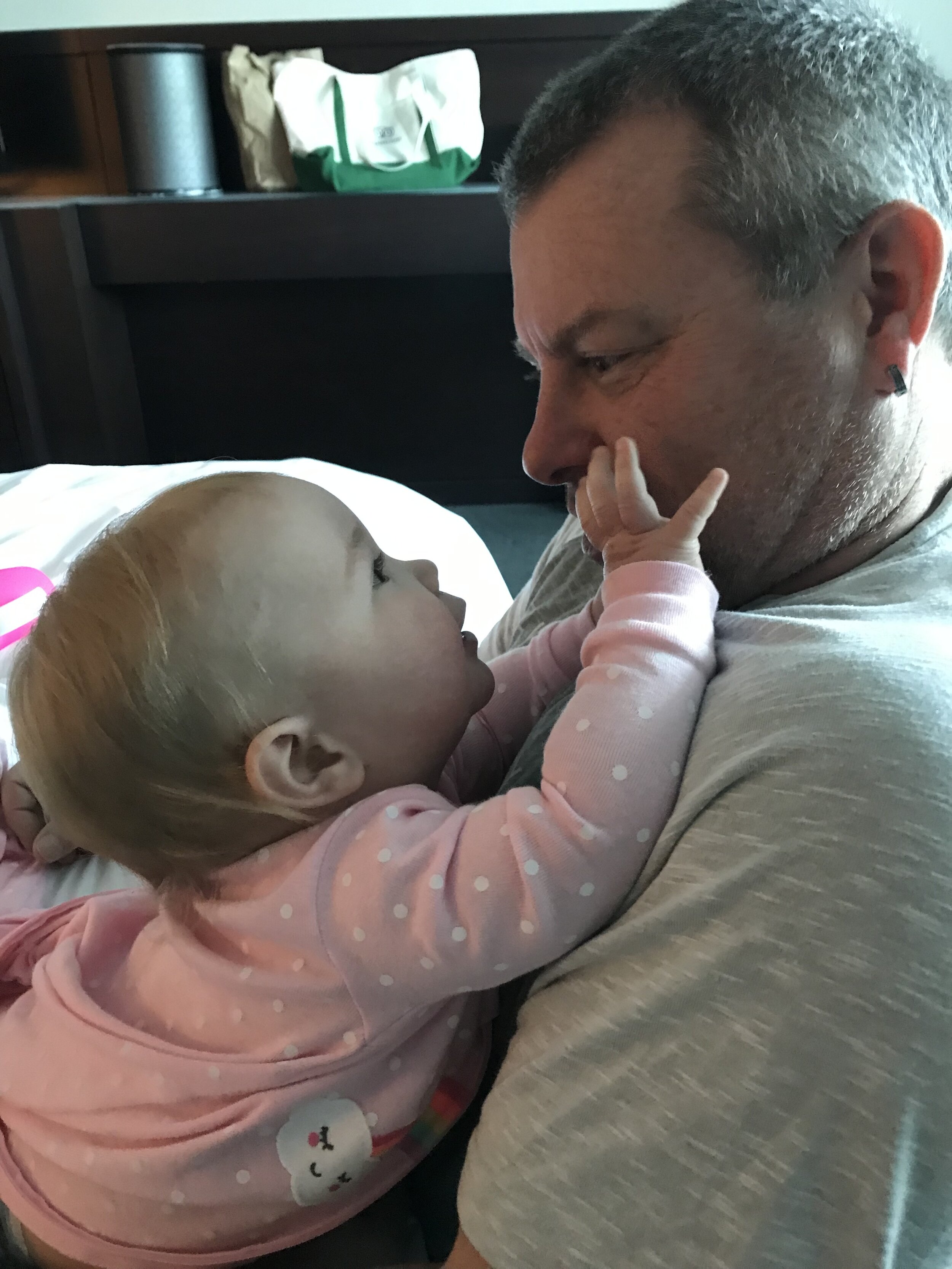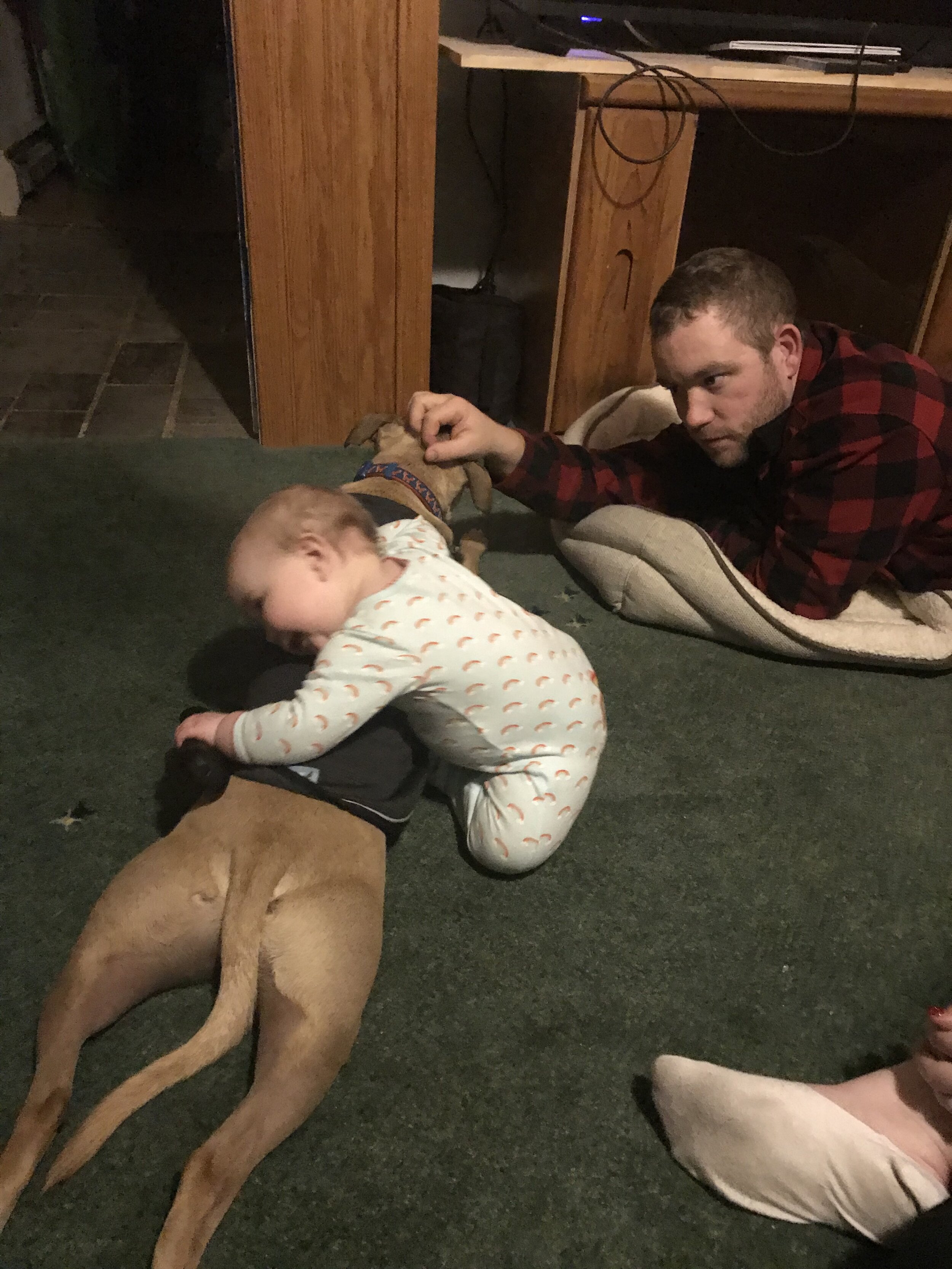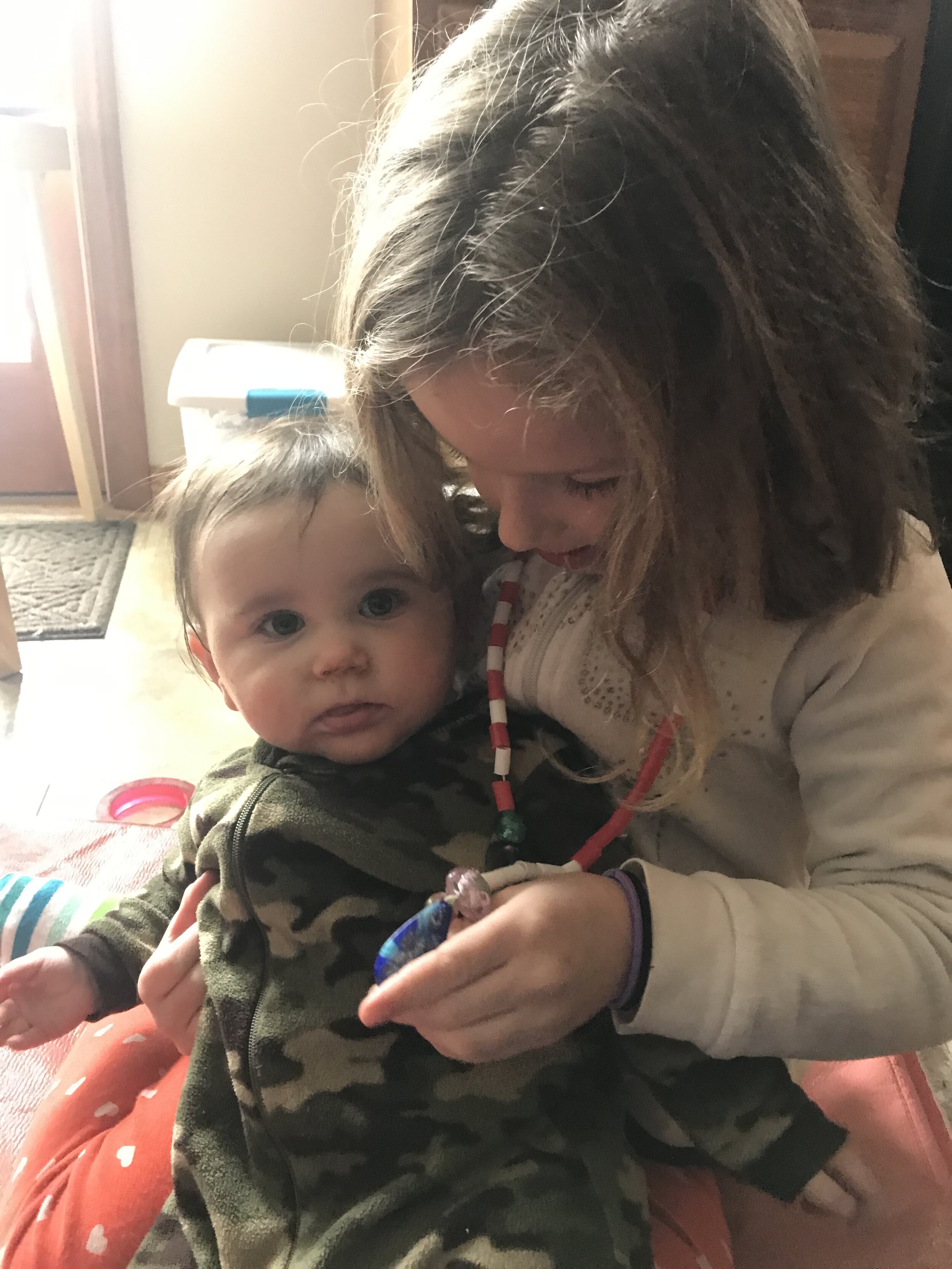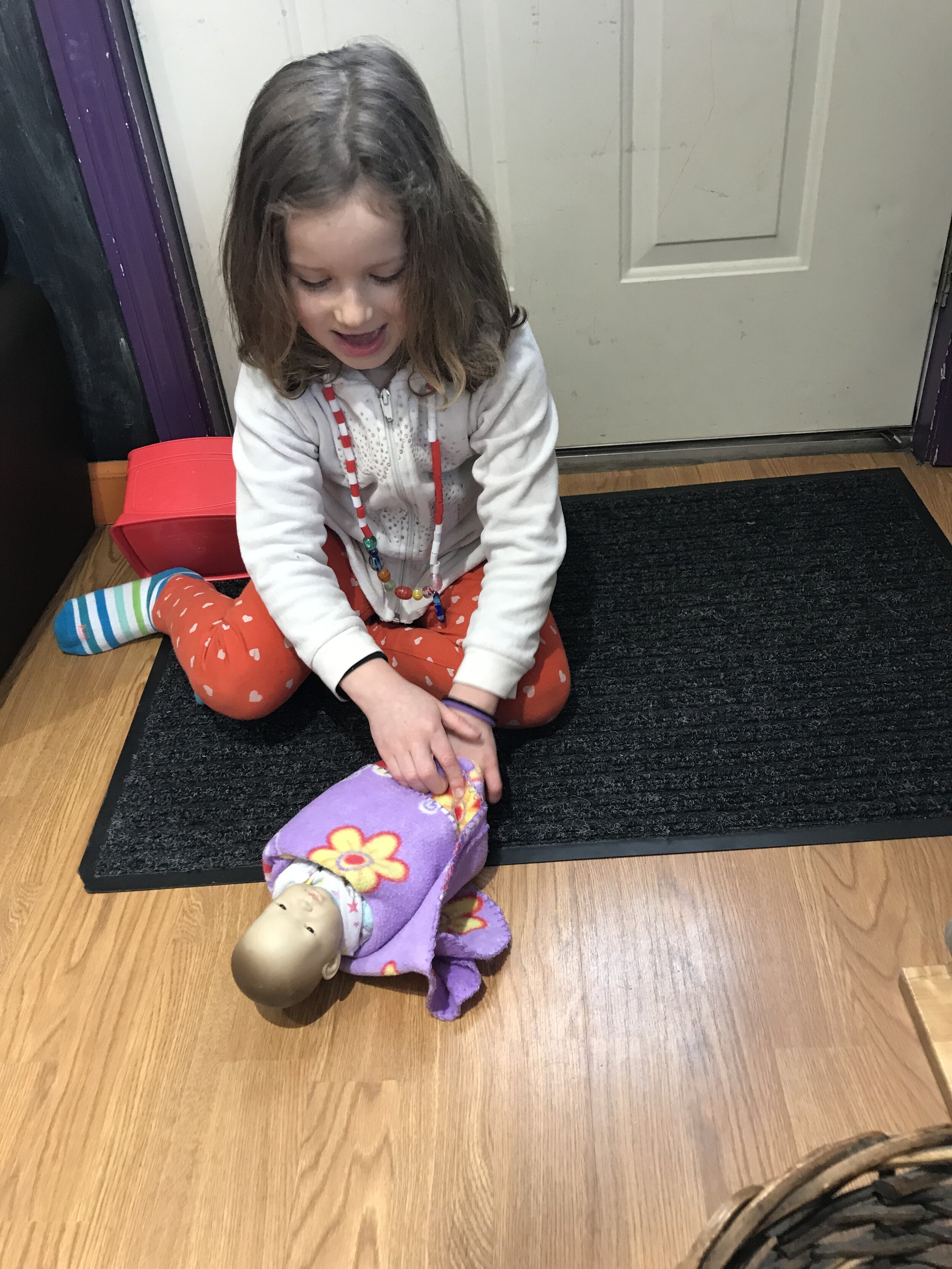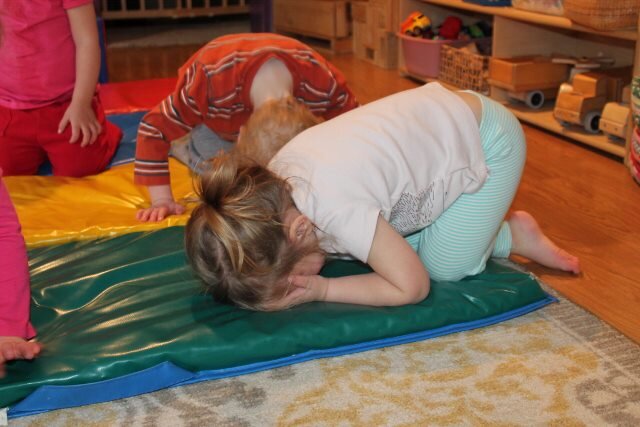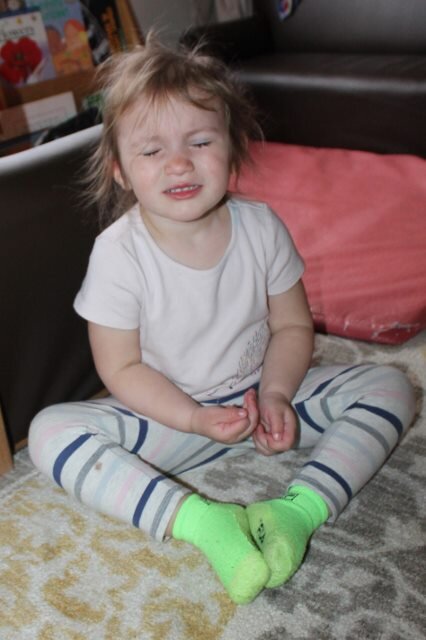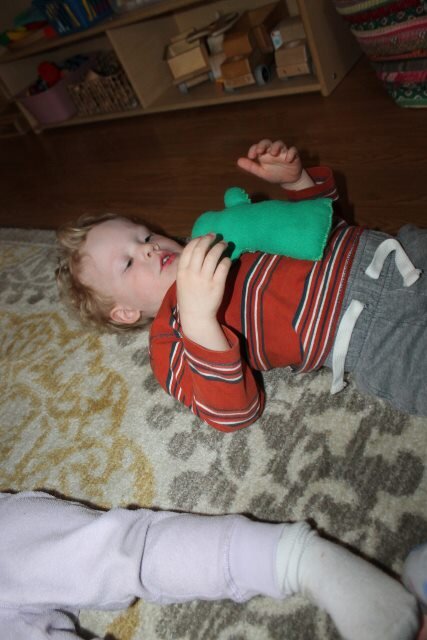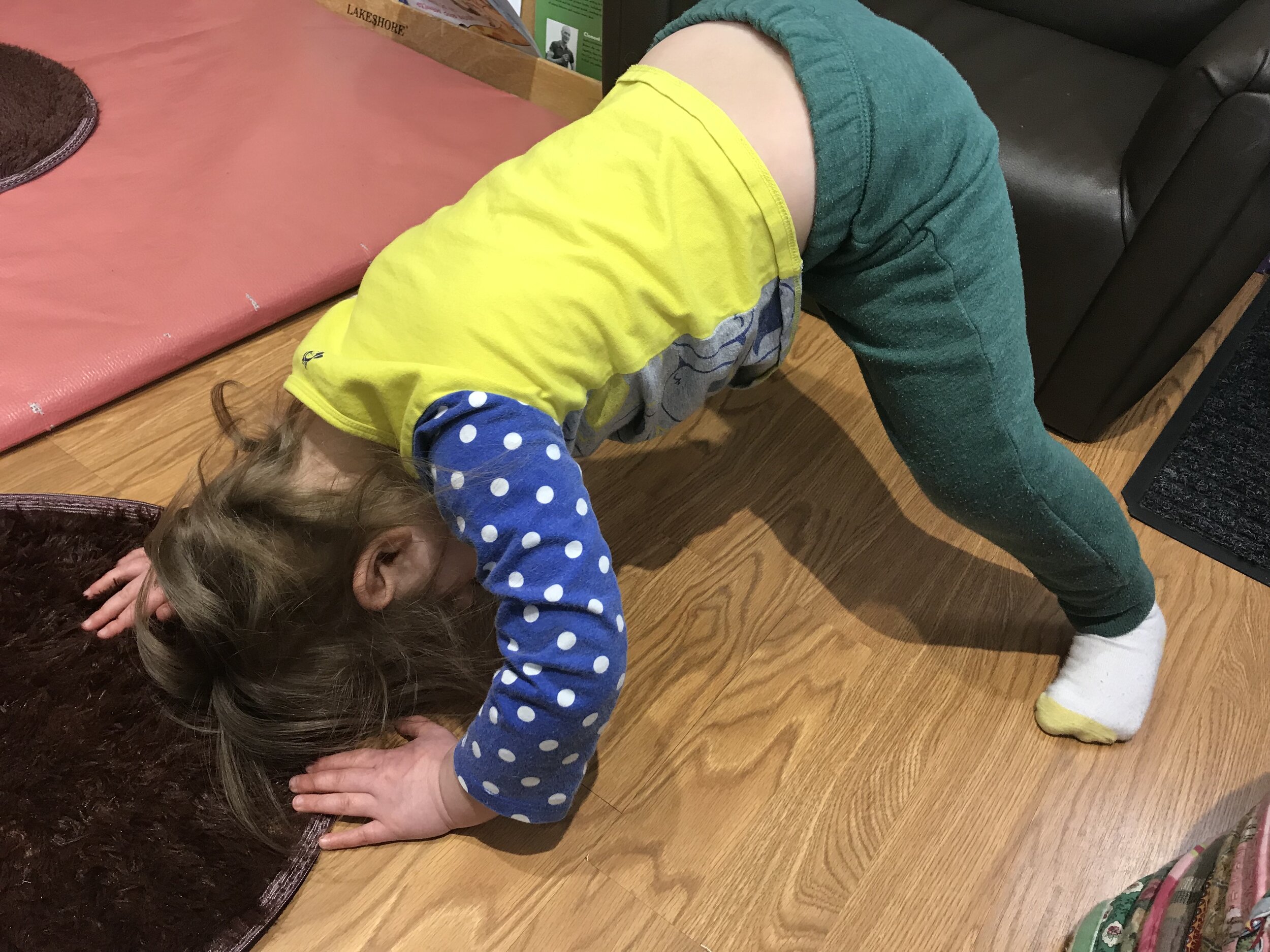Bedtime Rituals and Routines
Published in The Other Paper, March 2017, written by Ellen M. Drolette
I decided that for this article I wanted to know the good and not so good about bedtime routines that parent’s use and what have been the
ramifications when it hasn’t worked or maybe your child was not a great sleeper. I asked in a variety of social media forums about people’s routines. I really got some incredible, sweet and funny feedback. There was one constant for many and that was reading stories before bed. This eventually led to the child reading to the parent and eventually to themselves in to their later years. This one simple step is essential to building literacy skills while also creating a routine and this can start from birth. Children need consistency to feel secure and safe.
This creates an opportunity for healthy social and emotional growth to happen in a natural way.
Many people responded by saying a bath before bedtime, while some said a bath wound their children up and they avoid it. My best friend, Beth shared this, “My favorite ritual with the girls was ‘happy thoughts and wishes’. We would talk about all the things that had happened that day/week that brought them joy and what we had to look forward to. We did this every night, falling asleep”. An old high school friend of mine, Don tells me that, “Each of my daughters had different songs I would sing after story. One liked Twinkle, Twinkle little star and the other Row, Row, Row your boat. Usually took three times and it was lights out. I miss those days!” One friend of mine, Thea with grown children recalled these memories; “I sang very non-traditional lullabies, things like Sweet Baby James and Brand New Key. One of my favorite memories is Shannon calling me from a James Taylor concert and saying, ‘This is for you, Mom!’.”
My friend Kate shares a humorous look at what the first child sleep routine felt like and what it has morphed into with three children.
“The routines have evolved as the kids have grown up obviously. When Jax was an infant it was such a process that actually getting him to sleep and then tucked away in his crib amounted to the same stressful pressure as what I can only assume people that diffuse bombs for a living experience. If the house creaked, the blanket pulled, or God forbid your necklace hit the crib as you stood back up after a successful crib drop... it was detonation and start back at step one. Once he and subsequently Seamus became actual people instead of crying
potatoes the routine has settled in to each getting a song of their choosing or a story they can agree on from Joe and then he tags out and I go in and we talk about something that would be fun to dream about while I set up their tents so that ‘he doesn't stare at me in my sleep’ complaints are averted. Sometimes in the morning this leads to stories of actually dreaming the a fore mentioned dreams or at worst how the dreams didn't happen but if they did it would have been like this!”
Another Mom sent me a private message as her daughter is a teenager and would disown her if she knew she was sharing. They still have this routine today. “I sing her a song, rub her back, snuggle with her, etc. Every night before bed. "Her song" started when she was an infant, and would not sleep. Over the course of a couple of weeks with many sleepless nights, ‘her song’ was created. I was delirious and singing "Mockingbird" over and over and over and over. I started making up verses, and a few of them stuck. Eventually, "her song" came into being. It is half Mockingbird and half made-up stanzas that I've been singing for 15 years.
She knows all the words and will sing along with me or tell me if I skip a line when I'm really tired. And, yes, sometimes I get strange looks from people when I tell them I put my 15 year old to bed. And she won't let me mention it around her friends. But it is a very special time of day. After I sing, when she is really relaxed and drifting off to sleep, she will start talking to me. Really talking. Some of our best communication happens during that time. I absolutely treasure that time with her and I will keep doing it until she goes to college . . . in fact, the other night, she told me: "Mom, you realize that when I move out, if I have a bad day, I'm going to call you to sing me to sleep." (insert heart explosion here).” This is why we have rituals, so we can raise children to feel safe, secure able to communicate with the adults they trust when they are in a time of need and to create strong attachments and develop socially and emotionally to deal with what the world
deals out.
Lastly, I leave you with this beautiful exchange that happens nightly with a Dad and his Son.
“Every day, no matter what kind of day we have, my son and I end it with the four questions:
Who loves you? - Daddy
How come? - Because I'm your son.
How much does Daddy love you? -
Infinity
How long will Daddy love you for? -
For always and forever.
Been doing it every night since he could talk. Whether giggling or crying, the questions and answers never change.”
“There is No Stork” and “Rover Did Not Go Live on a Farm”
Published March, 2018 in The Other Paper, written by Ellen M. Drolette
Children trust their parents more than anyone else in the world. They also expect that when they ask questions that they will get
honest answers. Some things are magical about a child’s world like the tooth fairy, Easter bunny, and Santa Claus. At some point,
children reach an age and ask “Is Santa Claus real?” As their most trusted, we teach them about the magic of each of these characters and the history behind them.
In the lives of children, parents should ALWAYS be honest about birth and death. It is hard to explain, it is complicated, and it is difficult to put into words. How many times have you heard a young child ask how a baby got in a mommy’s belly and how it is coming out? No, the stork is not dropping off the baby, and the baby did not all of a sudden just appear in the belly. It is hard to find the right words for tough conversations. That is why some fantastic authors did that work for us. They take the difficult questions and make it easy for us to answer.
Parents often try to protect their children from hurt, disappointment, and heartache. Avoidance of questions for fear that they may ask one that cannot easily be answered. However, children need to learn the emotion of loss of life. They too will have to experience
grieving. As a child, my first death experience was a classmate at 12 years old. The experience of grief was scary and an emotion that was unfamiliar to me. However, many people grow up having never experienced loss making it difficult to have this conversation with a young
child.
As a parent, my children started experiencing deaths of family members from a very early age. They lost many grandparents, an uncle, classmates parents, and by the time they were in high school and college, even classmates. They also experienced 9/11 as children in elementary children, when the discussion of death was unavoidable, and honesty was what they needed along with many hugs and being available for any questions. What I learned is that my children have a healthy outlook on what is a natural part of living. Dying.
Some tips on dealing with questions about birth an death with young children:
·
Be honest. Use proper words and don’t shy away from the words “dead,” “death” and “dying” when discussing death.
·
Don’t hide your emotions. Talk about them. As parents, we want to teach children to talk about how they are feeling. Be the example. Crying in front of your child is okay.
·
Share the information as soon as appropriate. Don’t let the child find out from someone else in a way you may not have intended.
·
Prepare your child for memorials, funerals or other rituals that may cause curiosity. Especially around burial rituals.
·
Provide resources for your child.
·
When preparing a child for a birth-do tell them the truth about where babies come from.
·
Do use proper anatomical terms when discussing the specifics.
·
Don’t overshare. Give the child the information they want. They will take it in small bits to digest and ask more questions over weeks, months or even years.
As parents, we sometimes forget about what lies far ahead, years from now for our babies. Forethought about how to handle these difficult conversations prepares children with life skills they will carry on with them the rest of their lives.
Resources to help families and children around birth and death conversations:
The Goodbye Book by Todd Parr
Something very Sad Happened by Bonnie Zucker
Where do Babies come From? Our first talk about birth by Dr. Jillian Roberts and Cindy Revell
It’s not the Stork! A book About GIRLS, Boys, Babies, Families AND Friends by Robie Harris
Unsolicited Grandparent Advice from a Soon-To-Be Mimi
Originally Published in January, 2018 in The Other Paper by Ellen Drolette
I thought it would be appropriate to share a few pieces of
advice that don’t come in the parenting manual. Being a mother will always be one of my most significant life accomplishments. Raising children is hard work. It is a mix of bitter and sweet, downhill and up, pumping with all your might and coasting to a complete stop. Parenthood is moments of silence, utter chaos and organized messes throughout your life met with many mixed emotions.
Be a good listener. You taught me better than anyone that I do not need to fix your problem. You once told me that I just need to listen. As a Mom and Dad, you will want to fix all of the things. Don’t. Just listen first. You taught me that. It may have taken over 25 years, but, I got it.
Sometimes your child just won’t like you. Parents can sometimes make decisions that are unpopular, especially, when your child is a teenager and just doesn’t like anyone. Be
a parent during those times, not a friend. Hopefully, they will understand and say “thanks ma, what was I thinking?”
Take care of yourselves. Parents will still need time to be a couple and as they get wrapped up in becoming a family of three, identity can sometimes get lost. Have a
date night. Accept the help from your neighbors and by all means make sure that you take care of you.
You are your child’s BEST advocate. No one will ever know your child better. You will always be your child’s best and
first advocate. Never apologize to anyone for advocating for your child’s needs. Ever.
Play, play, play. Looking back if there were one thing as
parents we would do differently, it would be that we would play more. We would have just gotten on the floor and played cars, blocks, dress up and drawn pictures WITH you.
Don’t let anyone tell you that you are holding your newborn baby too much. Hold your baby as long as you want
to. You cannot “spoil” a young infant that is creating attachments to trusting adults.
When your child asks for “just one more book”, every few days give in. It won’t seem like it right now, childhood
lasts just a little while. There are only a few years before a child becomes an independent reader. Snuggle with your
child and read one more book before bed.
Play outside every day. I don’t say this for the sake of your child. I say this for the sake of the adults in every child’s life. Get yourself and your child outside every single day. Yes, weather can be cold. Both parents and children need daylight, fresh air and time to move. It does wonders for children’s behaviors and adults as well.
Be a good listener. You taught me better than
anyone that I do not need to fix your problem.
You once told me that I just need to listen. As a Mom and Dad, you will want to fix all of the things. Don’t.
Just listen first. You taught me that. It may have taken over 25 years, but, I got it.
In closing, I had to find a perfect quote that speaks to the grandiose-ness that being a grandparent
will be and what it is to every grandparent and parent. “Grandparents are parents, but with more
sleep, fewer rules and an endless supply of cookies.” Anonymous
Making Sure Schools are Ready for the Children
Published May 2018 in the Other Paper, South Burlington, Vermont. Written by Ellen m. Drolette
The fact is that children will develop best when their transitions from program to program are limited, and they can spend their first five years in a program or with a relative that can meet their individual needs as they develop. “The development of the brain is influenced by many factors, including a child’s relationships, experiences, and environment.” (Zero to Three, 2018)” “My child is turning three, and they NEED to be kindergarten ready. Therefore I must remove them from the caregiver they have known since infancy because they need to learn.” Playing is not a break from learning, PLAY IS LEARNING for young children. Learning happens through the rich activities and relationships that have been built over the years either in a high-quality, child care programs, with a nanny, at home with a relative or with Mom or Dad. It is not where a child lands but more what the experiences they are having. It is that time of year when parents of children in the Three to Five age range are starting to feel the angst. Kindergarten and now the increasing Pre-kindergarten registrations across the state are ramping up as are the anxiety levels. Is my child ready? Does my child know what they are supposed to know? What if they aren’t reading and writing? Why? It is because society has placed expectations on young children that may not be reasonable for their age. Families don’t come equipped with a handbook about developmentally appropriate practice, and any parent will do all they can to make sure their children are “kindergarten ready.” I, give you a different perspective. What if schools choose to be child ready? What if as parents, grandparents, and caregivers we focused on the whole child? Body, mind, and spirit.
Free play fosters opportunities to create with no limit on time or space. When children are given small bursts of times and quickly moved on to the next activity, they can not fully explore an idea.
When children have multiple days to experiment, they do lots of trial and error and sometimes pick up where they left off and continue.
These are our next architects, engineers and construction workers.
“My child is turning three, and they NEED to be kindergarten ready. Therefore I must remove them from the caregiver they have known since infancy because they need to learn.” Playing is not a break from learning, PLAY IS LEARNING for young children. Learning happens through the rich activities and relationships that have been built over the years either in a high-quality, child care programs, with a nanny, at home with a relative or with Mom or Dad. It is not where a child lands but more what the experiences they are having. The fact is that children will develop best when their transitions from program to program are limited, and they can spend their first five years in a program or with a relative that can meet their individual needs as they develop. “The development of the brain is influenced by many factors, including a child’s
relationships, experiences, and environment.” (Zero to Three, 2018)”
The National Association for the Education of Young Children is a strong proponent of play and the value it plays in the role of readying children for life. “Play is simple and complex. There are many types of play: symbolic, sociodramatic, functional, and games with rules-–to name just a few. Researchers study play’s many aspects: how children learn through play, how outdoor play impacts children’s health, the effects of screen time on play, to the need for recess in the school day.” (Bongiorno, 2018) Vermont’s Early Learning Standards starts with
the first domain being “Approaches to Learning.” The first statement, “Children engage in play to understand the world around them.” (Vermont.gov, August)
I have purposely changed my language to talk about children being “life ready” rather than school ready. Being life-ready means that a
child has had time to play and learn in an unhurried style their first five years of life. Kindergarten is preparedfor students rather than students be prepared for Kindergarten.
Take these moments in a child’s life and hold them dear. There is no other time in one’s life when playing is all you have to do
to learn.
“Play is often talked about as if it were a relief from serious learning. But for children play is serious learning. Play is really the work of childhood. ”
References:
Bongiorno, P. L. (2018, April). NAEYC.
Retrieved from NAEYC.org:
https://www.naeyc.org/our-work/families/10-things-every-parent-play Three, Z. t. (2018). Zero to Three. Retrieved
from https://www.zerotothree.org/espanol/brain-development Vermont.gov. (August 2016). Vermont.gov.
Retrieved
Empathy and the Young Child; What’s Love Got to do With It?
Originally posted in The Other Paper, South Burlington, Vermont, January 2017
written by Ellen M. Drolette
Prosocial behavior in young children can be puzzling. Puzzling for those that have studied children’s behaviors as a profession and puzzling for those that have to raise tiny humans to be loving, sympathetic, empathetic, respectful and kind. Empathy is one of those traits that has
always made me curious. Is it nature or nurture? Can empathy be taught? I mean….can a 2 year old really understand
empathy? Why is this fundamental attribute important for children as they grow into contributing members of society?
Empathy is modeled over time by caregivers for children. When a child is hurting or sick; as caregivers, we nurture them and hold them
and say things like “I wish I knew what I could do to make you feel better.” Or “Oh goodness! You skinned your knee. That must have really hurt? What can I do to make you feel better?” Showing children through a variety of ways can help them develop these skills. When a caregiver acknowledges their feelings by naming them, they are helping the child understand what the feelings are called. This allows them to have a label for the moment they need to interact with a friend and use that same language. When they get pushed down and either their ego is bruised or they are hurt. These opportunities are when the adults can interject and use it as a teachable moment. “Ouch, that must have really hurt. I see that you’re sad. Do you want to tell Zach how that made you feel?” The caregiver would then use the opportunity to tell Zach, “Do you see how sad Joanna is? She has tears. Do you want to check in with her and see if she is okay?” Children need to feel validated. Over time with consistent responses, a child will learn that when an accident happens, that they can react in a positive way.
Another popular issue that comes up is around sharing. Children quickly understand injustices when a friend won’t share a toy they want. A
child wants what someone else has. The adult can consistently use the same approach and say, “I see you want that toy, can you ask Joanna for a turn when she is done.” For children, sometimes sharing is about power and control. I have this. You want it. I’m going to keep it. Somewhere along the line though, they end up on both ends having the toy and then wanting a toy someone else has. Consistency
is very important, children must know what is expected of them. Many adults choose to take the coveted item
out of the equation rather than taking the time to get to the core of the issue.
The number one most important way that adults, caregivers and older siblings can help “teach” empathy is by modeling the skills that they
want the child to gain. Seeing a person in need and helping them. Seeing someone hat has fallen off their bicycle, even if you don’t know them and offering assistance; volunteering time to an organization, serving a meal at the soup kitchen on a regular basis. These are
tangible ways to illustrate empathy in action. When a child first arrives in to the world, their bonds, attachments and tending to their needs will be their first “lesson” in empathy. After all, children’s needs must be met before they can empathize with others. Be kind and play on.
Creating Yoga Practice and Meditation with Your Child
Originally published by The Other Paper, South Burlington, Vermont February 2017 article written by Ellen M. Drolette
Yoga is not just for the organic, crunchy individuals anymore; as a matter of fact, there is yoga classes especially for children and many
more for adults if all abilities all over Vermont. There is hot yoga, gentle yoga, funny named yoga that looks hard and yoga classes that will include meditation, and there are classes by the river and on the waterfront. Myself, I have dabbled with all of the above types of yoga by taking group classes, using videos and my favorite is free flow with children. I would never go as far as to call myself a yogi or any kind of a yoga expert. I do enjoy the practice however. I have discovered that practicing yoga with children is more my speed. I don’t judge myself as harshly and know they appreciate my efforts.
Create an atmosphere that is fun and stress-free. Follow their lead by keeping the session short. Ten minutes or less may be long enough. As children get more and more comfortable, they may want to do it longer.
Downward Dog, Happy Baby and Bumblebee Breaths are just a few of the yoga poses practiced with young children, children and adults of all ages across the globe. It is a practice that teaches body awareness, stress reduction and builds a healthy practice of body movement that can be practiced as a family. Many families start the practice when they have infants doing it with them on the floor nearby.
Children quickly learn through routine that breathing exercises are used at the start and end of yoga. it signals them that this is what we do to start and end each session. Even if it is just me and one other child, we use the breathing techniques as a signal. When children learn
these techniques, they can use them when they need to calm themselves, feeling like they need alone time or sometimes in times of aggression. A quiet reminder from an adult about deep breaths could be just the cure if done mindfully with intention that a child
stop and breathe. At first that comes from prompts. For example, a child falls and they are hurting and having a hard time collecting themselves. A parent may say “Take a deep breath.” This is not something that is inherently known, like just breathing in and out normally.
We call these “big belly breaths”. These can be practiced on the floor with a small stuffed animal on the belly and the child fills their tummy with air and then empties it. It gives them a great visual. I am not sure I ever knew how to fully breathe in and out until I took a class that had a focus on breaths and stretches. Children as young as 12-18 months can start learning how to use these techniques which may be funny and playful to start. Sometimes a giggle fest will ensue. My preference is to start with the flower/bubble method. Breathe in to smell the flower (pretend to pick the flower and put it up to your nose, you can get very dramatic with this), then you grab your bubble blower and blow
your bubbles while blowing out fully (again, being dramatic as you get bubbles on your bubble wand.) Another breathing technique is called the Bumblebee breath. This is one where a deep breath is taken in and as theexhale happens, a buzzzzzzzz sound is made until all of the air is out. Try is being a snake as well and use a hisssssssss.
For children that may have a hard time self-regulating, I suggest to have the child go down in to the rock pose; for adult’s that take yoga this may be called the child’s pose. Their bodies are folded with their legs underneath them and arms down by sides. The forehead is flat on the floor. This helps with making a child feel grounded and head off melt-downs if you see one coming. There are poses that can be strung together to create what is called a flow. There are strings for calm down and energizing.
My favorite books for young children are My Dad is a Pretzel By Baron Baptiste. I love that this story takes parent’s occupations and turns them into yoga poses. It is a great way to explore gender roles in professions while exploring yoga practices. For those interested in delving deeper; there is a yoga deck of cards from the same illustrator of the book by Baptiste called Yoga Pretzels. Little Yoga By Rebecca Whitford is a lovely book for an introduction to infants and toddlers to the world of yoga.
Don’t worry too much about your child’s form, just have fun. As a parent and caregiver, I find something magical in being a flower, a tree and butterfly even if for just a little while. Make sure you end with a deep breath a bow to your child and a “Namaste”
which in yoga terms means, “The light in me honors the light in you.”
Guest Blogging in 2020
I am so grateful to have been asked to do some guest blogging. Family.co covers the child care industry and child development for an audience in the US and UK. They are one of the biggest Early Years publications in the UK, and have had over 2 million visitors to the blog this year.
This was published in November, 2020. https://famly.co/blog/the-adult/avoiding-burnout-early-years-child-care/
Another was published in December, 2020 about using Appreciative Inquiry in early care and education. How Child Care Workers Can Find More Joy in Each Day | Famly
Emerging from Stressful Situations Appreciative and Strong
by Ellen M. Drolette
September 18, 2020
“Nothing can dim the light which shines from within.”
Maya Angelou
“Tell me about the best thing that happened to you this weekend?” I could change this statement and ask, “Tell me about the best thing that happened when you were quarantined with a stay-at-home order for three months.” At least that is how most of us in Vermont and around New England spent our Spring. What is the best part, you ask?
One of the highlights for me (there were many) was making connections with people around the state through virtual support and networking. I also know that I said many times, “I will never have this amount of time off again.” I am going to embrace it and enjoy it. With that came a bit of guilt.
When I reflect on those weeks leading up to reopening, and I wondered if this is what public school teachers feel like when school reopens. I was anxious, butterflies, and concerned. Was the new system going to work? Was I going to be able to manage the illness without making people angry? (probably not) Can I social distance from parents while still taking temperatures and checking in.
It was a delicate balance between doing what is safe and healthy for all and developmentally appropriate for very young children.
The bright spots personally were the closets and nooks and crannies that got cleaned in both our houses. It was a tremendous amount of time I had to reflect on my work while I scanned old photos and packed up old junk.
I also did a tremendous mental cleanse. Throughout the time of the stay at home order, I went through some significant business changes that resulted in time spent letting go. It took lots of anger, sadness, talking, and tears to get through to the other side—the side where I come out healthier, happier, and more balanced than ever before.
Little did I know that over time the love I had for myself had deteriorated without me knowing. Little by little, I had been worn down, I took some time to learn to love myself again. I realized that people only understand their level of perception; any explanation from me won’t matter.
The thing is- perception is not reality. It may be one person’s reality, but not my reality. What helps guide me are my goals or mantras.
I have a few simple goals in life.
1. Be a good person
2. Make a difference in other people’s lives.
3. Be kind even when it is hard to be.
4. Live appreciatively, joyfully, and optimistically.
5. Laugh often
6. You are worthy. Don’t let anyone tell you otherwise.
The moral of the story. Ask yourself often. What is something good that happened this week? This Month? This year?
